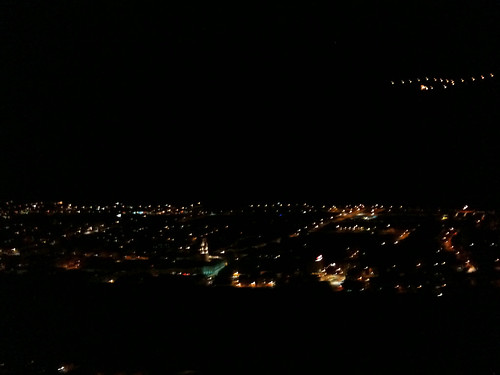2010-04-30
Valborg
2010-04-28
Will the real Sofia please stand up?
Because Sofia already had a partner, she introduced me to her younger sister Lisa, a student at Linköpings University. Lisa and I also began to chat frequently, and although we considered meeting several times, she was also shy, and we never did meet. Eventually, Lisa also told me that she had a new girlfriend, a woman from Japan working at an engineering company in Linköping. Just as with Sofia, Lisa and I never had a video chat and never met in person.
After a year or so of frequent and lengthy chats with both sisters, Sofia informed me that she had gotten a job with a well-known IT firm in California, and would be moving to the San Francisco Bay area. We continued chatting, albeit somewhat less frequently, and she gave intermittent updates about her life there. When I visited my brother in San Francisco, I suggested to Sofia that she and I meet. She declined, and I began to wonder if she was real.
Then, in October of 2008, I moved to Switzerland for work. Soon after moving to Zürich, I joined Nordiska—the Nordic Rowing Club of Zürich—and became acquainted with many Swedes and other Scandinavians here. Among the Swedes I met at Nordiska were several who worked at the Zürich office of the big IT firm where Sofia had started working. When one of these guys told me he was soon going on a trip to the main office in California, I told him about my friend Sofia. “She’s friendly, smart, and Swedish,” I told him. “Look her up and tell her Michael said hello.”
When he returned from his trip, he had disappointing news. “There’s no one with that name working for the company,” he told me. The next time I saw Sofia online, I told her what I had learned. “I use my Mother’s maiden name when chatting online,” she told me. She declined to tell me her real last name. My other friends at the company tried to identify her by her other characteristics—that she was Swedish and deaf, for example. They were also unable to find anyone working there that matched her description.
Then, one day, I saw some photos posted by a friend online. They were photos from a dance competition at La Isla, a salsa dance club in Stockholm that I frequented when I lived there. In the photos, I saw a face that looked familiar. The girl was tagged in the photos, so I clicked through to her profile and looked at her other photos. Those photos looked very familiar. Then it hit me: these were some of the same photos that “Sofia A.” had shared with me years before, and had claimed were photos of her!
Could this be the same girl? Her first name was also Sofia—let’s call herSofia B.—and she appeared to be from Sweden; but judging from the dates and places mentioned in her photos, she had not lived in the U.S.—at least not recently. I sent “Sofia B.” a short note telling her that she looked familiar and asking if we knew each other.
The next day, she replied. She wrote that I didn’t look familiar, but that we had several friends in common. This is true—we both know several people in the salsa dance scene in Stockholm, and I know some of the people who appear with her in the dancing photos. Sofia B.’s email was open and friendly, and did not seem like the kind of reply I would have received from someone who had just been caught in a lie.
I decided to tell her the whole story. I sent Sofia B. another email, explaining why she looked familiar—that I had had a multi-year conversation online with someone who had been using her photos. I pointed her to the profile pages that Sofia A. had created on OKCupid and Facebook.
2010-04-20
The Böögg goes BOOM!
The Böögg goes BOOM!
Originally uploaded by Michael A. Lowry
2010-04-19
Nordisco, 20 March 2010
The party at Nordiska a few weeks ago was a great success. Luc, I, and a few others were the last ones at the party when the sun rose around 6.
This morning I finally got around to posting my photos from the evening. Enjoy!
Sunset through the Eyjafjallajökull ash
Capturing a great photo requires having your camera at the right time and place. Much of the art of photography is arranging to be at the right place at the right time. But yesterday it was just luck. I had been carrying my camera around all day just in case I saw something photo-worthy. Aside from your garden variety holiday snapshots, I didn’t have much success. But then on the walk down Höestrasse to my home, I saw this amazing sunset over Üetliberg. The sky had been covered all day with a sort of soft diffuse silver haze; and at sunset this haze turned a dark shade of yellow—and later, pink. I stood on a handrail and leaned out over the street to capture this photo, zooming in all the way (200mm) and pointing the camera between two houses.
2010-04-15
Be kinder than necessary…
Swedes are careful about letting people get too close, and tend to err on the side of caution when it comes to social situations. If a Swede passes someone on the street she thinks she might know but isn’t sure, she’ll most likely not greet the person. The risk of accidentally greeting a stranger and having to deal the the resulting awkwardness is, for the Swede, too daunting.
The darkness in winter plays an important role. To get a close enough look at the person passing on the street, the Swede will have to practically stare at the passerby. There’s not enough light, and people bundle up so much in winter that their distinguishing features are obscured. Rather than straining to look or make eye contact, most Swedes will just look straight ahead and not even glance at the passerby.
A Spaniard on the other hand, would greet the person, stranger or not—and upon accidentally greeting a stranger, would make a new friend.
It probably also has to do with the relatively high cost of offering hospitality in a cold climate. I.e., if you have to work hard during the warm months just to save up enough food and firewood to last you through the winter, then you’ll naturally be more careful about whom you allow into your circle of friends. But once a person is a friend—well then you’ve gotta stick together no matter what, and help each other through the hard times. It takes longer to make friends in Sweden; but my Swedish friends are people I would count on through thick and thin.
I think it’s clear that many of the social customs we observe today evolved out of necessity, arising naturally from the conditions of the existing physical and social environment.
Whether social customs are well suited to the present environment is largely irrelevant because it can take a long time for customs to catch up with changing conditions.
I like American courteousness and consideration, because it acts as a social lubricant, greasing the gears of everyday social interaction. The waitress at the diner may not actually wonder how you’re doing when she asks, but it’s still a nice gesture—and even smalltalk can offer the opportunity to engage in a real conversation. I also recognize that the American friendliness is often superficial, and that it can be hard to make meaningful friendships with some Americans.
I try to combine the best aspects of both the American and Swedish styles, being friendly to strangers, but devoting most of my energy to those few like-minded friends who have reciprocated my friendship and have shown me that they deserve it.
I think most Swedes would benefit from trying to be a bit more open and friendly with others. And as I have long said, Swedes actually like being friendly. They just need an excuse.



